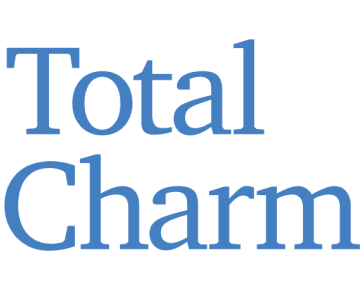Plastic Surgery
Blepharoplasty
Blepharoplasty is a surgical rejuvenation procedure aimed at improving the appearance of the upper and lower eyelids.
A plastic surgeon may recommend this surgery if there are one or more aesthetic issues, including:
1. Sagging eyelid skin forming folds.
2. Distortion of the natural contour of the upper or lower eyelids, leading to impaired vision.
3. Fat deposits, puffiness, or bags under the eyes that are not corrected by other methods.
4. Ptosis (drooping) of the lower eyelids with exposure of the white of the eye below the iris.
5. Excess skin and fine wrinkles on the eyelids.
Upper blepharoplasty may involve the excision of sagging eyelid skin, the restoration of the eye-opening muscles, and the removal of excess fat.
Lower blepharoplasty is performed to correct bags under the eyes, with the possible removal of excess fat and skin, and it also addresses sagging lower eyelids.
Ptosis of the eyelids can also be caused by sagging eyebrows, so brow lifting may also be necessary.
The procedure is performed under sedation and local anesthesia. If both upper and lower blepharoplasty are performed simultaneously, the surgery may take about 2 hours. Incisions on the upper eyelids are made along natural lines, so scars are not visible afterward. Excess skin and fat are removed, followed by cosmetic sutures. Lower eyelid surgery can be performed using various methods, often without external incisions.
After the surgery, it is important to follow the doctor's recommendations to reduce the severity of possible side effects (swelling, bruising) and prevent complications. Recovery can take from one to two weeks, and physical activity can typically be resumed within 2-4 weeks.
A plastic surgeon may recommend this surgery if there are one or more aesthetic issues, including:
1. Sagging eyelid skin forming folds.
2. Distortion of the natural contour of the upper or lower eyelids, leading to impaired vision.
3. Fat deposits, puffiness, or bags under the eyes that are not corrected by other methods.
4. Ptosis (drooping) of the lower eyelids with exposure of the white of the eye below the iris.
5. Excess skin and fine wrinkles on the eyelids.
Upper blepharoplasty may involve the excision of sagging eyelid skin, the restoration of the eye-opening muscles, and the removal of excess fat.
Lower blepharoplasty is performed to correct bags under the eyes, with the possible removal of excess fat and skin, and it also addresses sagging lower eyelids.
Ptosis of the eyelids can also be caused by sagging eyebrows, so brow lifting may also be necessary.
The procedure is performed under sedation and local anesthesia. If both upper and lower blepharoplasty are performed simultaneously, the surgery may take about 2 hours. Incisions on the upper eyelids are made along natural lines, so scars are not visible afterward. Excess skin and fat are removed, followed by cosmetic sutures. Lower eyelid surgery can be performed using various methods, often without external incisions.
After the surgery, it is important to follow the doctor's recommendations to reduce the severity of possible side effects (swelling, bruising) and prevent complications. Recovery can take from one to two weeks, and physical activity can typically be resumed within 2-4 weeks.
Chin liposuction is performed by the radical removal of fat using a specialized device. This procedure allows for a more refined and feminine appearance of the chin.
Chin liposuction is recommended for individuals who have:
1. Excessive localized fat deposits under the chin.
2. Developed a double chin due to fat deposits.
3. An unclear chin contour.
The procedure is performed under local anesthesia and typically takes about an hour. Initially, the surgeon makes a small incision beneath the chin through which a thin cannula is inserted. The cannula is attached to a suction device, and the required amount of subcutaneous fat and fluid is removed. Once the desired contour is achieved, the cannula is removed, and the incision is sutured.
Significant amounts of fat cells are removed during this process, and fat accumulation is reduced. However, if a substantial amount of weight is gained afterward, the remaining fat cells may enlarge, necessitating a new procedure. Therefore, it is recommended to review one's diet and lifestyle to maintain an optimal weight after the surgery, ensuring long-lasting results.
Advantages of chin liposuction:
1. Improved facial contour and overall appearance.
2. Visually elongated neck.
3. Long-lasting results.
4. Enhanced self-confidence and quality of life.
Recovery from the procedure requires specific measures. For one week, wearing a compressive bandage and sleeping in an upright position to keep the chin elevated is necessary. Vigorous physical activities should be postponed for about a month.
Chin liposuction is recommended for individuals who have:
1. Excessive localized fat deposits under the chin.
2. Developed a double chin due to fat deposits.
3. An unclear chin contour.
The procedure is performed under local anesthesia and typically takes about an hour. Initially, the surgeon makes a small incision beneath the chin through which a thin cannula is inserted. The cannula is attached to a suction device, and the required amount of subcutaneous fat and fluid is removed. Once the desired contour is achieved, the cannula is removed, and the incision is sutured.
Significant amounts of fat cells are removed during this process, and fat accumulation is reduced. However, if a substantial amount of weight is gained afterward, the remaining fat cells may enlarge, necessitating a new procedure. Therefore, it is recommended to review one's diet and lifestyle to maintain an optimal weight after the surgery, ensuring long-lasting results.
Advantages of chin liposuction:
1. Improved facial contour and overall appearance.
2. Visually elongated neck.
3. Long-lasting results.
4. Enhanced self-confidence and quality of life.
Recovery from the procedure requires specific measures. For one week, wearing a compressive bandage and sleeping in an upright position to keep the chin elevated is necessary. Vigorous physical activities should be postponed for about a month.
Chin Liposuction
Thread Lift "Aptos"
Thread Lift "Aptos" is a minimally invasive procedure used for facial or body skin lifting. Aptos is a unique technique that provides noticeable results almost immediately, and the presence of threads in the face is not felt, allowing natural facial expressions to be preserved.
At the "Total Charm Vake" clinic, the "Aptos" thread lifting procedure is performed by Georgiy Sulamanidze (the founder of the Aptos method) and Albina Kajaia, an international trainer and expert in the Aptos methods.
At the "Total Charm Vake" clinic, the "Aptos" thread lifting procedure is performed by Georgiy Sulamanidze (the founder of the Aptos method) and Albina Kajaia, an international trainer and expert in the Aptos methods.
With Aptos thread lifting, various results can be achieved, including:
- Smoothing nasolabial folds.
- Lifting the lower and middle thirds of the face.
- Tightening the skin on the neck.
- Correcting and firming the facial oval.
- Addressing facial asymmetry.
- Preventing sagging in the cheekbone area, jowls, and the appearance of "marionette lines," as well as eliminating a double chin.
- Adjusting the shape of the nose.
- Lifting sagging skin on the body, especially in areas like the knees, inner thighs, abdomen, and inner arms.
Advantages of Aptos thread lifting:
- Safety and minimal trauma.
- High effectiveness, with initial results visible immediately after the procedure.
- Preservation of a natural facial appearance.
- Simplicity of the procedure and minimally invasive nature.
The absorbable Aptos threads support tissues and smooth wrinkles, while the polylactic acid in their composition significantly improves the condition of the skin and stimulates the production of natural collagen.
The Aptos thread placement technique takes about 10-20 minutes and is performed under local anesthesia without the need for incisions. Since the procedure is minimally invasive, no scars form afterward, and the recovery period is minimal.
The effect is noticeable immediately after the procedure, with the final result becoming evident within 2-3 weeks and lasting up to 2 years or 4 weeks.
- Smoothing nasolabial folds.
- Lifting the lower and middle thirds of the face.
- Tightening the skin on the neck.
- Correcting and firming the facial oval.
- Addressing facial asymmetry.
- Preventing sagging in the cheekbone area, jowls, and the appearance of "marionette lines," as well as eliminating a double chin.
- Adjusting the shape of the nose.
- Lifting sagging skin on the body, especially in areas like the knees, inner thighs, abdomen, and inner arms.
Advantages of Aptos thread lifting:
- Safety and minimal trauma.
- High effectiveness, with initial results visible immediately after the procedure.
- Preservation of a natural facial appearance.
- Simplicity of the procedure and minimally invasive nature.
The absorbable Aptos threads support tissues and smooth wrinkles, while the polylactic acid in their composition significantly improves the condition of the skin and stimulates the production of natural collagen.
The Aptos thread placement technique takes about 10-20 minutes and is performed under local anesthesia without the need for incisions. Since the procedure is minimally invasive, no scars form afterward, and the recovery period is minimal.
The effect is noticeable immediately after the procedure, with the final result becoming evident within 2-3 weeks and lasting up to 2 years or 4 weeks.
Leave your request right now, and we will get in touch with you shortly
Do you have any questions?

Fill out the form
and our manager will contact you shortly!

